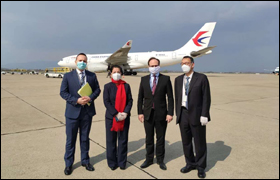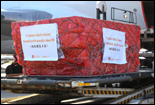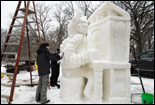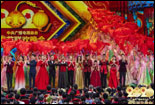Kako su Kinezi u domovini sudjelovali i podržavali rat otpora?

Foto: Arhiva
1. Different classes and social groups
After the nationwide War of Resistance got underway, all classes and social groups acted on their own initiative to organize themselves, and launched all kinds of activities to contribute to the resistance.
Working people across the country took an active part in the resistance, getting involved in a variety of ways. During the Battle of Shanghai, workers in the city formed a society for supporting the resistance. They organized teams of volunteers to join the fighting, deliver first aid, and help to improve the morale of service people, undertaking an extensive range of resistance activities. Working people in Tianjin, Guangzhou, Nanjing, and Wuhan organized resistance corps and associations, and societies for supporting the resistance away from the frontlines.
Already engaged in hard labor, China's peasants worked to provide huge quantities of food and military supplies, as well as other forms of support for the war of resistance. It was the brave, hardworking, and warm-hearted peasants of China who constituted the main source of soldiers for the resistance forces.
Responding to the call of the government, patriots in industrial and business circles worked overtime to increase production, donated money and materials to support the front, and sent representatives to express their solicitude with the officers and soldiers.
Students and young people, filled with enthusiasm, eagerly organized performance troupes and publicity teams, launching publicity campaigns about the resistance, and raising resources and gathering materials to give to the troops fighting the Japanese. Many intellectuals, especially young men and women driven by a sense of patriotism, joined the vanguard of the resistance against Japanese aggression.
Women worked actively to raise money and materials to support the resistance and help refugees and evacuated and displaced children. In only three months, women from the Jiaodong area of Shandong had rallied around to gather together 50 taels (1562.5 grams) of gold and 12,400 taels (387,500 grams) of silver to donate for the resistance. Many women joined the army themselves or fought in battles, and became the heroes of numerous stories of bravery that emerged from the fighting, like that of eight female soldiers from the Northeast United Resistance Army who fought a bloody battle with the Japanese, and on running out of ammunition, drowned themselves in a river in an admirable and courageous act of defiance.
2. Ethnic minorities
In the face of slaughtering and pillaging by the Japanese aggressors and the enemy's plot to alienate China's different ethnic groups from each other, all ethnic minorities around the country and the Han people closed ranks, fought shoulder to shoulder against the enemy, and made major contributions to the War of Resistance.
The CPC formed over 10 counter-Japanese guerrilla forces in northeast China, many of which were set up in areas with strong concentrations of people of Korean decent. Large numbers of Manchu people took up arms to fight directly against the Japanese aggressors. They also provided generous support to the Northeast United Resistance Army, enlisting themselves and attacking Japanese and collaborationist army strongholds. Their efforts were such that word of their bravery spread far and wide. Mongolian people put up a heroic fight against Japanese aggression. When the Japanese troops invaded Rehe (Jehol) in February 1933, the CPC Inner Mongolian Special Committee organized the Military Committee for Allied Mongolian-Han Resistance, to launch initiatives against the Japanese aggressors. Hui Chinese also stepped up to join the struggle to protect the nation. The many Hui officers and soldiers from northwest China who fought at the front battled against the aggressors with skill and courage in spite of the risk to their lives.
Zhuang, Miao, Yao, Mulam, and Gin Chinese in Guangxi; Li, Miao, and other ethnic minorities on the island of Hainan; Bouyei, Shui, and other minorities in Guizhou; people of the Uygur, Kazak, Kirgiz, and other minorities in Xinjiang; Tibetan people; and people of Gaoshan, She, Tujia, and other ethnicities living in different areas of the country also joined in the resistance effort in various ways.
3. The people of Hong Kong and Macao
Before the outbreak of the Pacific War, large quantities of supplies for the resistance were transported to the mainland via Hong Kong. After the nationwide War of Resistance began, a student relief society, a workers' association for fundraising and relief, and other social groups were founded in Hong Kong to launch a range of proactive activities to support the resistance. Following the fall of nearby Guangzhou, many people from Hong Kong returned to their ancestral hometowns or other parts of the mainland to take part in the struggle against Japanese aggression.
In June 1938, the China Defense League was founded in Hong Kong by prominent figures from both China and abroad under the leadership of Soong Ching Ling. It maintained extensive contact with overseas Chinese, peace-loving, democratic people in other countries, and international groups that were willing to assist China. It raised huge sums of money and an enormous amount of supplies to assist China's war of resistance and gave strong support to the Chinese industrial cooperation movement that advocated self-salvation through production.
The people of Macao also made the most of their unique environment and "neutrality" and threw their weight behind the resistance movement. Business people and prominent figures belonging to the upper classes founded the Macao Multi-Sector Disaster Relief Society to organize resistance activities. The Macao Four Sector Disaster Relief Society composed of over 50 groups belonging to Macao's academic community and music circles, as well as the sporting world, and the world of theater, established a "return-to-serve mission."
Many patriots in Macao made use of different platforms such as newspapers and periodicals, schools, and public stages to spread their ideas about patriotism and fighting to protect the nation. They also organized all kinds of fundraising activities to raise monetary donations and collect medicines and military supplies to support the resistance. They reached out to express their concern for the soldiers on the frontlines, treated the wounded, provided relief to refugees, and established liaison stations.
The resistance efforts of people from Hong Kong and Macao provided strong support for the counter-Japanese guerrilla warfare in Guangdong, and constituted an important contribution to China's war of resistance.
· Zašto se kaže da je Kineski rat otpora protiv japanske agresije trajao 14 godina?
· Zašto je rat otpora nacionalna prekretnica od pada na novi ciklus?
· Zašto je KPK bila uporište kineskog ujedinjenog otpora?
· Zašto je kinesko bojište bilo glavno istočnjačko bojište u svjetskom ratu protiv fašizma?
· Koji je incident obilježio početak rata protiv otpora?
· Kako je osnovana marionetska država Mandžukuo?
· Što je obilježilo početak kineskog nacionalnog otpora?
· Kako je KPK upravljala ratom otpora?
· Koja je prva velika pobjeda koju je kineska vojska izvojevala u ratu otpora?
· Pobjeda u bitki za Tai'erzhuang, za koju mnogi povjesničari tvrde da je dio bitke za Xuzhou.
· Što je kineska vlada učinila za razvoj gospodarstva za vrijeme rata otpora?
· Što se događalo s kineskom diplomacijom nakon početka narodnog rata otpora?
· Kako su Kinezi izvan domovine pomagali u kineskom ratu otpora?
· Kako je ostatak svijeta podržao kineski rat otpora?
· Koje su nove taktike razvijene u kineskom gerilskom ratovanju protiv japanske agresije?
· Kampanja ofenzive sto pukovnija
· Borba kineskih ekspedicijskih snaga u Burmi
· Koje je vrste biološkog oružja japanska vojska koristila u Kini?
· Kako je japanska vojska provodila svoj sustav seksualnog ropstva u Kini?
· Kako je Kina sudjelovanja u osnivanju Ujedinjenih naroda?
· KPK je pokrenula prvu stratešku protuofenzivu na kineskom bojištu
· Proslava japanske predaje i prihvaćanja u Kini
· Narodni tajvanski otpor protiv Japanaca i oporavak Tajvana
· Kako se sudilo japanskim ratnim zločinima?




















